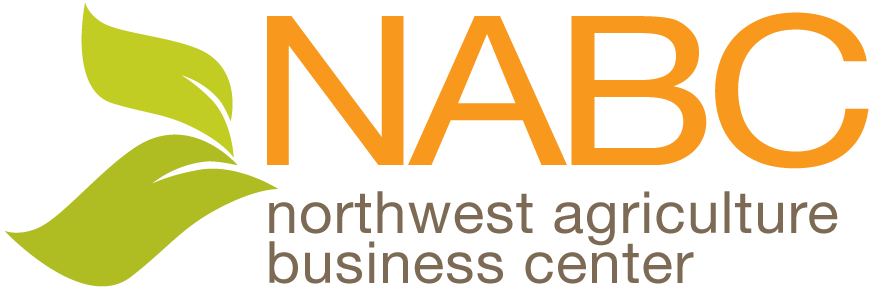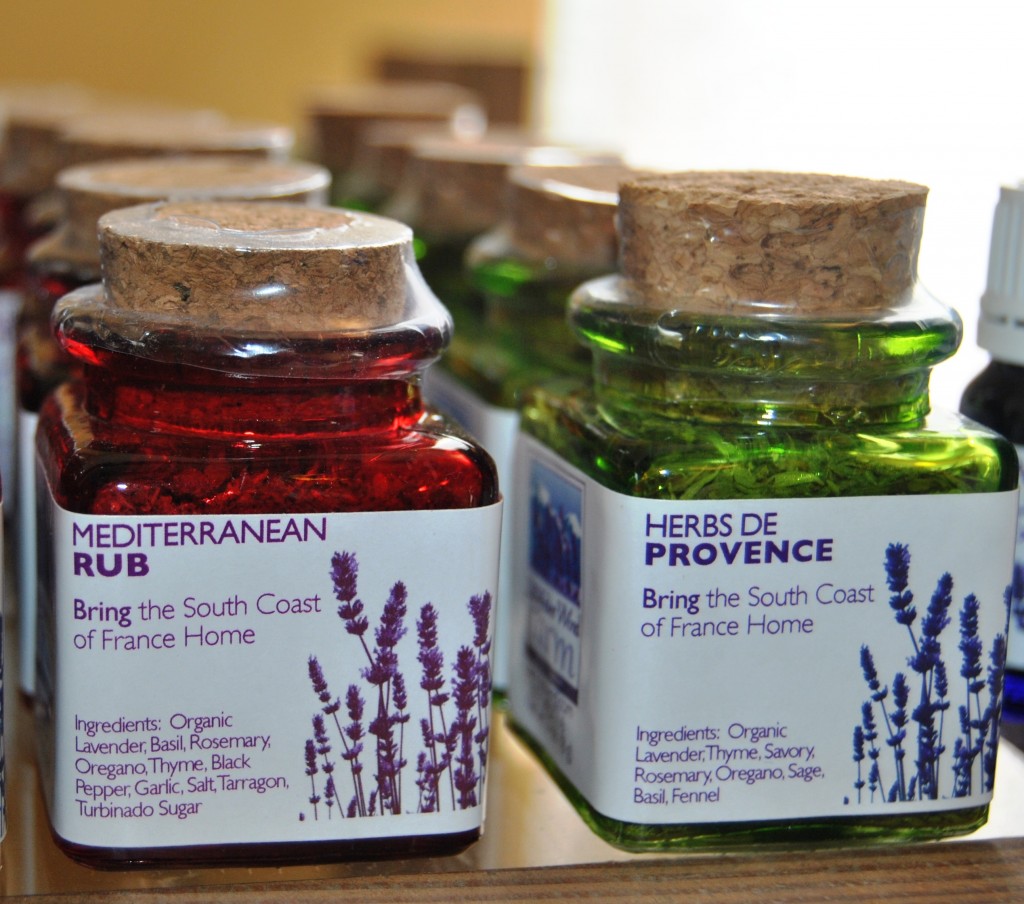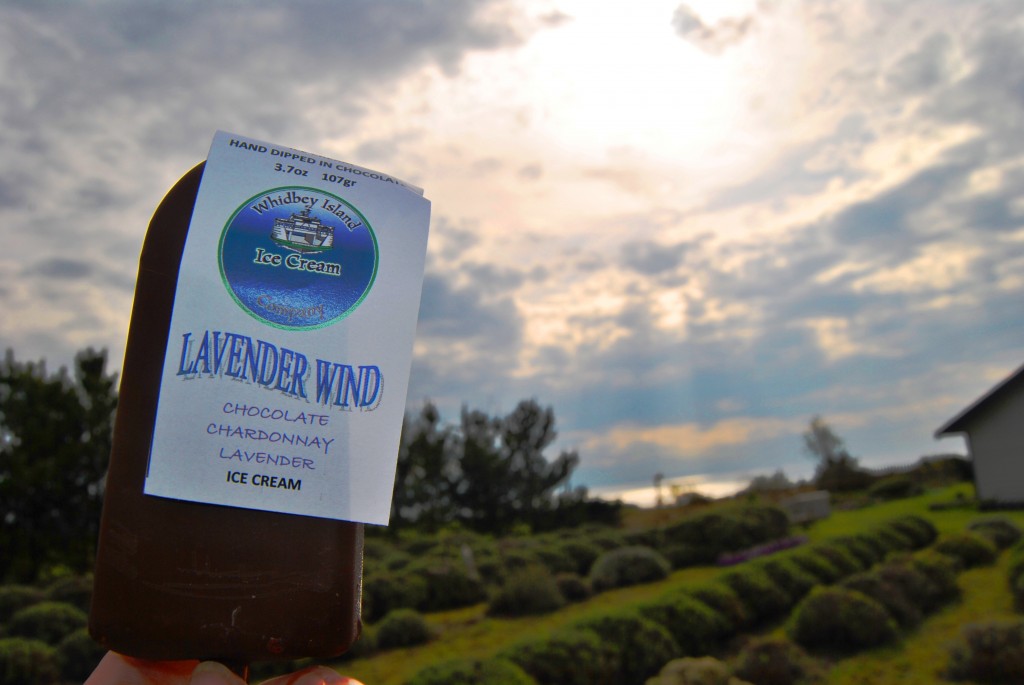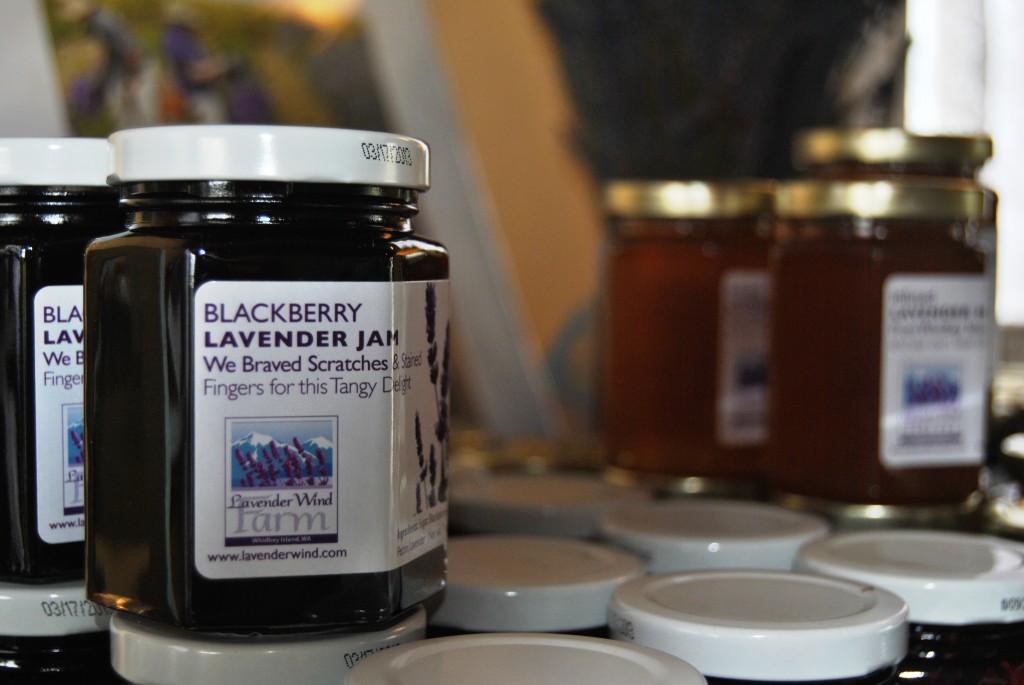Member Highlight: Sarah Richards, Lavender Wind Farm
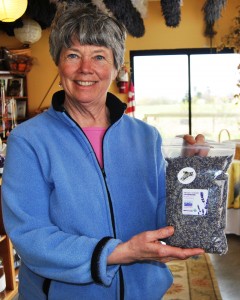 Sarah Richards owns the only lavender farm on Whidbey Island. With views of the Olympic Mountains and the Strait of Juan de Fuca, she has built a popular destination for tourists. She has also developed a full line of culinary and personal care products which are sold online, at her farm, and by local retailers. This summer, she is opening her first retail store and production facility in Coupeville. She is a member of the Puget Sound Food Network, a board member of Northwest Agriculture Business Center, and was a founding member of the Whidbey Island Grown brand. She is also a founding board member of the new United States Lavender Growers Association and will be attending the Sequim International Lavender Conference, April 27-30.
Sarah Richards owns the only lavender farm on Whidbey Island. With views of the Olympic Mountains and the Strait of Juan de Fuca, she has built a popular destination for tourists. She has also developed a full line of culinary and personal care products which are sold online, at her farm, and by local retailers. This summer, she is opening her first retail store and production facility in Coupeville. She is a member of the Puget Sound Food Network, a board member of Northwest Agriculture Business Center, and was a founding member of the Whidbey Island Grown brand. She is also a founding board member of the new United States Lavender Growers Association and will be attending the Sequim International Lavender Conference, April 27-30.
NABC’s Sherrye Wyatt caught up with Sarah earlier this month to find out more about the origins of her “accidental” business, the unique challenges of farming on an island and operating a business out of a historic house, and some of Sarah’s other passions.
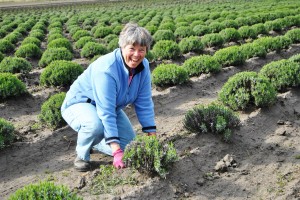
How did you get into lavender farming?
This farm was an accident. We were looking for a place to build a house in 1998 on Whidbey Island, and we found this land which was a part of the old Darst Farm. I took a shovel to see what kind of soil it had, and it turned out to be this incredibly beautiful, sandy loam. I recognized it because I had grown up with the same kind of dirt on my mother’s place on Martha’s Vineyard. We decided to farm it because it had been farmed for over 130 years. We chose to grow lavender because it had to be a crop that did not require irrigation. Plus, I had spent a year in France and it smells good, and the lavender surge in Sequim was starting to take off. Now on this farm we grow seven different kinds of lavender and have five acres in production. In the nursery we grow even more varieties for people to plant in their gardens.
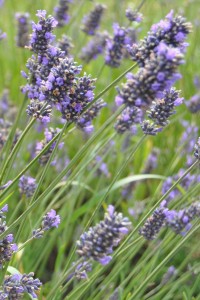 Is lavender hard to grow?
Is lavender hard to grow?
We are certified organic which makes it more difficult because we can’t put any chemicals on the weeds. Weeds are a problem when you have a perennial crop. They can invade the rows. We do as much tractor work as we can, but the rest is done with hand tools. All the lavender is harvested by hand. We don’t have enough acreage to warrant buying harvesting equipment, at least not yet. My plan is to paint the prairie purple! There are no other lavender farms on Whidbey and I would like to get more acreage under production. The way things keep growing we won’t have enough lavender to meet demand. Right now we need more lavender than we can produce.
What is the secret to your success?
The secret has been to grow very slowly. For the first few years we weren’t even on the map. Every year we learned more. Eventually, I surrounded myself with people who knew more than I did. My background is not in farming. I am a multi career person with 10 years as a mental health therapist. One of the key people here now is Younes Mou Mou. He is from Morocco and approached me two years ago because he wanted to learn about farming. He started as a weeder and I just recently promoted him to farm manager. He is fabulous. We have a good team and I’m getting everyone in place to grow the business.
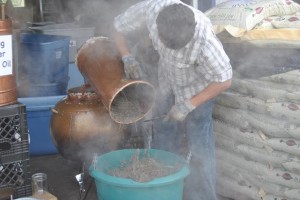
What can visitors see at the farm?
We are open to the public year round, but mid-June through August is when the lavender is at its best. We have purple alert at www.LavenderWindFarm.com with a scale from 1-10. The last weekend of July we annually hold the “Artists’ Invasion” where dozens of artists set up for two days to create and sell their work. In the summer while we are harvesting, we are also doing the distilling of essential oils. This is the primary activity people like to watch. It is a processing of the crop and it makes it into a value added product. Essential oils are the biggest deal about lavender, all the rest is just window dressing. The essential oil is where it is at. We make our value added products like sachets and dried lavender bunches, bulk lavender for other people to use for crafting, culinary lavender, herb blends and various food products. We make baking mixes, jams, jellies, ice cream and personal care products including lotions, soaps, shampoo and candles. We manage our own gift shop at the farm, an online store which is getting a new shopping cart. Soon we’ll have a new shop in Coupeville.
Some of Sarah’s value added products:
Why are you opening a shop in Coupeville?
The new place is a combination of a manufacturing facility and retail outlet. We will also be doing all of our shipping from there for internet sales. We will have a dehydrator and dry filling machine. Previously we haven’t had an official manufacturing place to make all of our personal care products and lavender crafts, and we’ve rented a commercial kitchen to produce our food products. So we are going to get this all packed into one place and staff it appropriately. Plus our community needs a commercial kitchen with packing capacity, and I am talking with other Whidbey Island Grown farmers. We are interacting with farmers in new ways.
How will this help your business and how do you promote yourself?
Now we are able to ramp up sales. I have just hired a full time sales manager who is focused on wholesale and retail sales. Her first step is getting introduced to our existing accounts, which are mostly on Whidbey Island. We are getting the word out through three chambers of commerce we belong to, plus we distribute brochures through Certified Folder on the ferries, the cruise ship terminal, at the Boeing tour, and other places. Also, we’re on the NABC Whidbey Island Map and we’re heavily into social media. We’ve always had our farm on the Whidbey Island Farm Tour. However, this year the new commercial kitchen will be on the tour instead. People don’t know what it takes to get preserved foods from the farm to the store. Our products and this new facility give us a chance to educate the public about what licensing is involved and what kinds of equipment it takes. We can show them what that process really looks like.
Are their considerations when putting a business in a historic house?
It’s as if buying the house has helped formulate the vision for my business. The house is a cottage, and suddenly I realized we are a true cottage industry. The house was built in 1916 and I found these old photos where there is nothing else on the block but this one house. I am so excited about it. The vibe is a sympathetic one, in terms of changing the use of the house from residential to a business. We’re making the transition in a way that fits the rhythm of things as opposed to something drastically different. The store will open by June. We have already started the inside demolition. We are taking great efforts to make the house serviceable, while keeping things historically accurate.
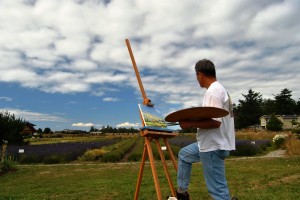
What are your other passions?
I’m on the board of Whidbey Air, the local internet only radio station. Also, through AAUW, I just created and awarded a new arts scholarship in memory of an artistic high school friend who died. It is named the Dale M. Fischer Scholarship and is for a high school student who will study art. The arts are very important. I was an Art and French major in college and it has been part of my life forever.
How do the arts influence you now?
The arts are important to any small business, even farmers. You have to be conscious of how things look, especially if you are doing agri-tourism. When you are designing marketing materials like a brochure or website, you need to understand the emotional appeal of visual design. In my case, it matters how the fields are laid out. Sure it matters what is best for the plant so it grows properly, but it also matters how it all visually plays out. Just as there are different rules for paints and how you use them, there are different rules for plants. I am using plants, buildings, rocks, and gardens as paints. My farm is my canvas, and plants are my paints.
